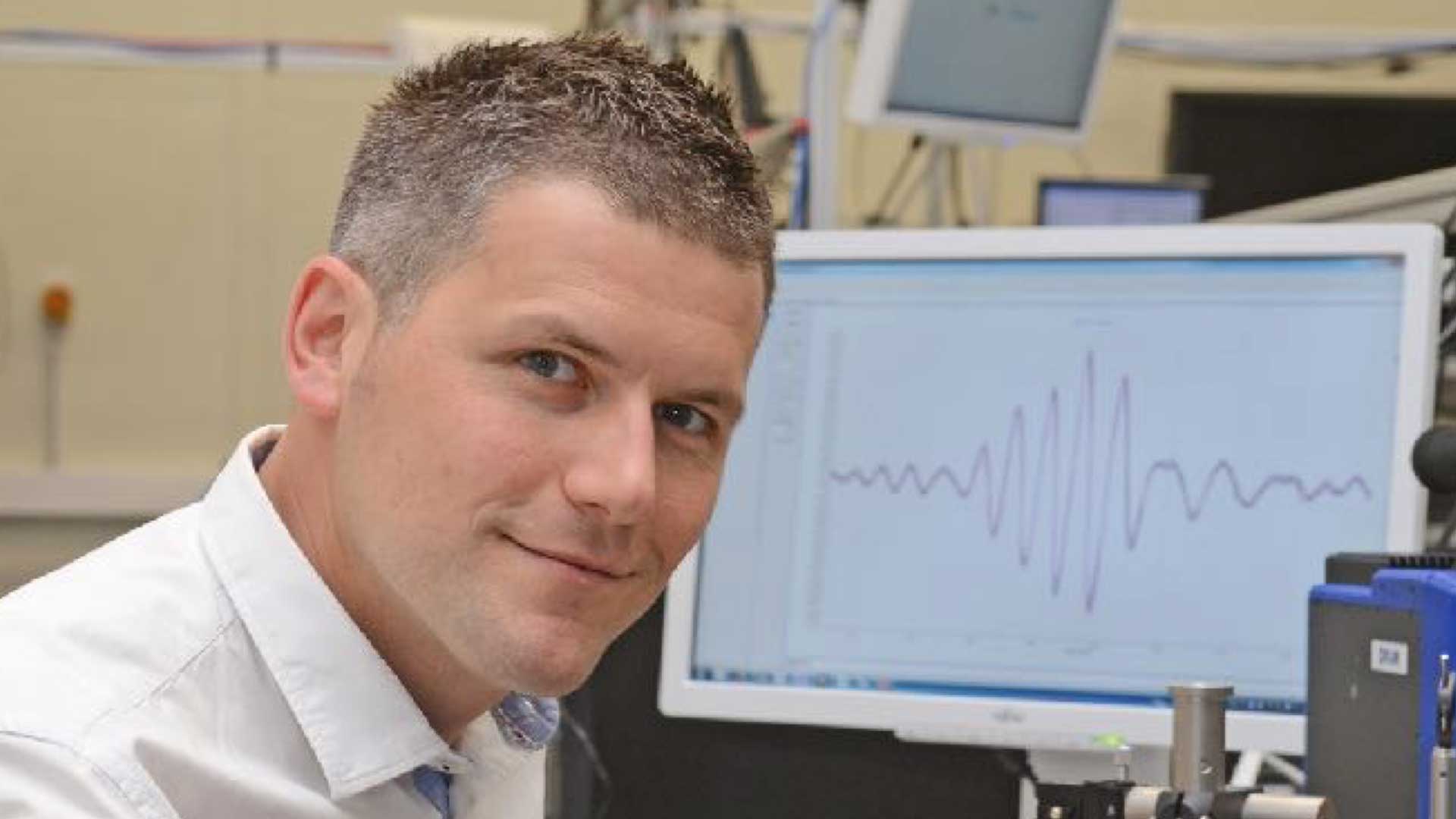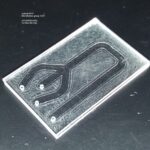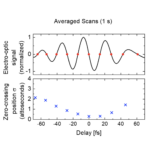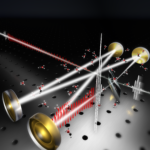- Home
- Research
- Spectroscopy and Imaging
- Work-Groups
- Field-Resolved Optical Precision Metrology
Field-Resolved Optical Precision Metrology
The optical electric fields associated with light-matter interactions carry in-depth information on the underlying physical mechanisms. The outstanding coherence of laser light enables direct measurements of these fields on their natural (sub-)femtosecond time scales, providing unique optical measurement tools for a wide range of applications.
Being a part of the Laboratory of Lightwave Metrology, our group develops techniques for field-resolved spectroscopy (FRS) of molecular vibrations in the infrared spectral region, aiming to approach the ultimate sensitivity and precision limits set by the nature of light. In line with the motto "Photonics for Life" and in close collaboration with physicians, we implement the results of this fundamental research in the field of photonics into new tools and technologies for addressing biomedical questions. These include high-throughput FRS flow cytometry, (sub-wavelength) FRS microscopy and high-resolution FRS spectroscopy of gases.
Research Insights
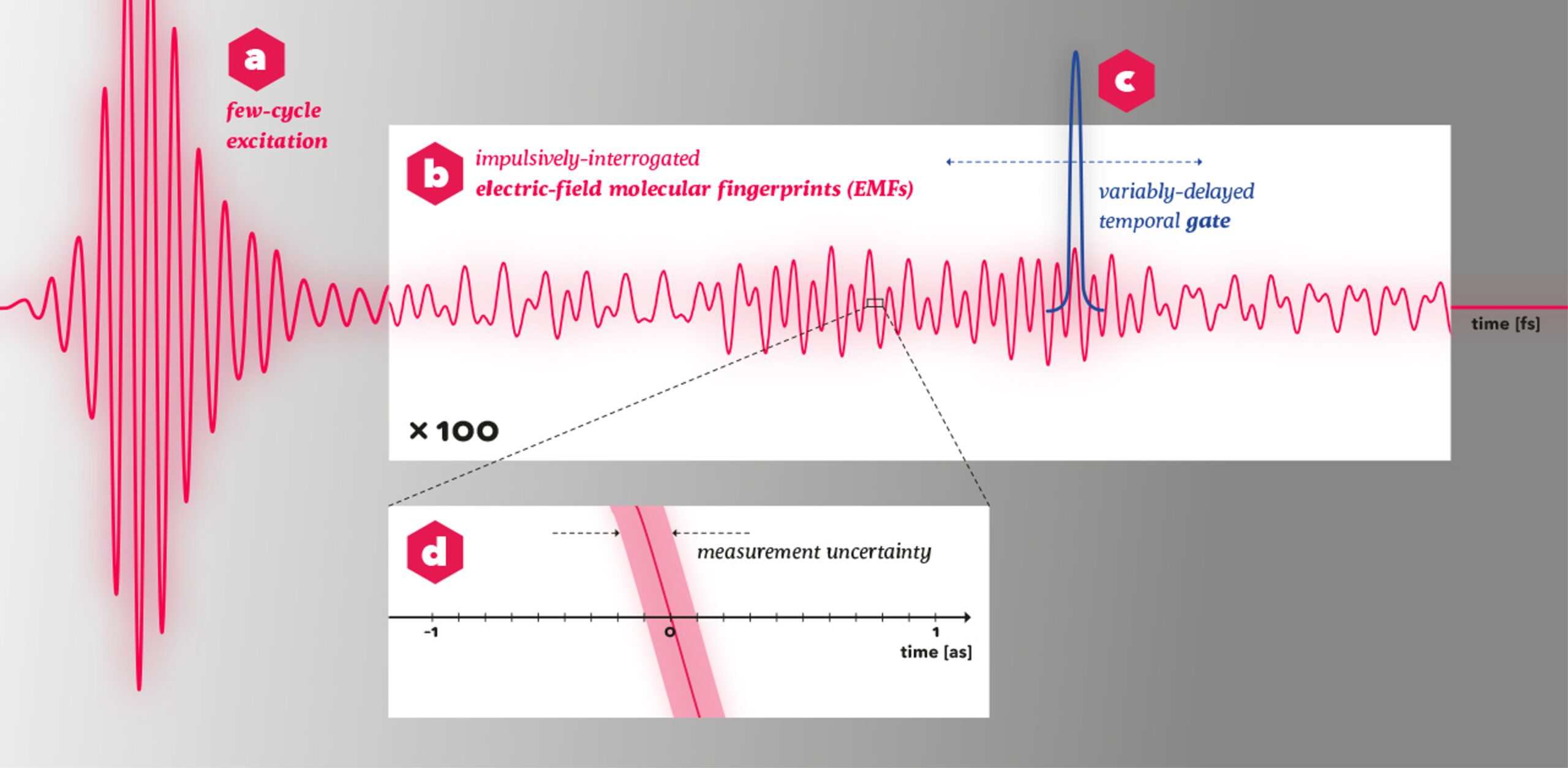
FRS records the coherent electric fields emitted by impulsively excited molecular vibrations
a) Waveform-stable few-cycle infrared pulses
At heart of our experimental setups lies the generation of few-cycle, high-power, waveform-stable infrared pulses. We target high pulse repetition rates (> 10 MHz) affording short measurement times and, thus, improved statistics. Our IR radiation sources are based on intra-pulse difference-frequency generation [1,2,3,4], and have reached world records in terms of brilliance for broadband coherent sources. Further development envisages the coverage of the entire molecular fingerprint region with powerful, few-cycle pulses.
1] High-power sub-two-cycle mid-infrared pulses at 100 MHz repetition rate, I. Pupeza, D. Sánchez, J. Zhang, N. Lilienfein, M. Seidel, O. Pronin, N. Karpowicz, T. Paasch-Colberg, I. Znakovskaya, V. Pervak, E. Fill, Z. Wei, F. Krausz, A. Apolonski & J. Biegert, Nature Photonics 9, 721 (2015)
[2] Field-resolved infrared spectroscopy of biological systems, I. Pupeza, M. Huber, M. Trubetskov, W. Schweinberger, S.A. Hussain, C. Hofer, K. Fritsch, M. Poetzlberger, L. Vamos, E. Fill, T. Amotchkina, K.V. Kepesidis, A. Apolonski, N. Karpowicz, V. Pervak, O. Pronin, F. Fleischmann, A. Azzeer, M. Zigman & F. Krausz, Nature 577, 52 (2020)
[3] Watt-scale 50-MHz source of single-cycle waveform-stable pulses in the molecular fingerprint region, T.P. Butler, D. Gerz, C. Hofer, J. Xu, C. Gaida, T. Heuermann, M. Gebhardt, L. Vamos, W. Schweinberger, J. Gessner, T. Siefke, M. Heusinger, U.D. Zeitner, A. Apolonski, N. Karpowicz, J. Limpert, F. Krausz, I. Pupeza, Optics Letters 44, 1730 (2019)
[4] Multi-octave spanning, Watt-level ultrafast mid-infrared source, T. Butler, N. Lilienfein, J. Xu, N. Nagl, C. Hofer, D. Gerz, K.F. Mak, C. Gaida, T. Heuermann, M. Gebhardt, J. Limpert, F. Krausz, I. Pupeza, Journal of Physics: Photonics 1, 044006 (2019)
b) Impulsively-interrogated electric-field molecular fingerprints
The excitation of molecular vibrations is confined in time to the few optical cycles of the initial IR pulse. In the wake of this nearly impulsive excitation, the molecules emit a coherent wave, the electric-field molecular fingerprint (EMF), which is directly recorded in the time domain via electro-optic sampling. The shorter the excitation, the better the temporal separation of the EMF. This separation mitigates detection sensitivity limitations related to technical noise of the excitation and relaxes the (linear) dynamic range requirements to the detectors [1]. In addition, measuring molecular signals proportional to the electric field rather than the intensity permits, for the first time, broadband IR transmission measurements of aqueous samples as thick as 0.1 mm or more with high signal-to-noise ratio [2], opening the door to, e.g., IR vibrational fingerprinting of live cells with high throughput and of biological tissue.
[1] Field-resolved infrared spectroscopy of biological systems, I. Pupeza, M. Huber, M. Trubetskov, W. Schweinberger, S.A. Hussain, C. Hofer, K. Fritsch, M. Poetzlberger, L. Vamos, E. Fill, T. Amotchkina, K.V. Kepesidis, A. Apolonski, N. Karpowicz, V. Pervak, O. Pronin, F. Fleischmann, A. Azzeer, M. Zigman & F. Krausz, Nature 577, 52 (2020)
[2] Optimum sample thickness for trace analyte detection with field-resolved infrared spectroscopy, M. Huber, M. Trubetskov, S.A. Hussain, W. Schweinberger, C. Hofer & I. Pupeza, Analytical Chemistry 92, 7508 (2020)
c) Electro-optic sampling with multi-Watt gate pulses
The optical waveforms associated with the light-matter interaction are measured via electro-optic sampling (EOS) involving their nonlinear mixing with an ultrashort gate pulse in a crystal. Our group has pioneered EOS with powerful, short-wave mid-IR gate pulses [1]. This enables record photon detection efficiencies of > 1 % in a bandwidth spanning more than one octave in the molecular fingerprint region. Because the electric-field strength scales with the square root of the number of photons, this implies an unprecedented measurement sensitivity of within one order of magnitude from the ultimate limit for – potentially single-cycle – optical electric fields. Further research targets the extension of this outstanding sensitivity to the entire molecular fingerprint region.
[1] Mid-infrared electric field sampling approaching single-photon sensitivity, C. Hofer, D. Gerz, M. Högner, T.P. Butler, C. Gaida, T. Heuermann, M. Gebhardt, N. Karpowicz, J. Limpert, F. Krausz & I. Pupeza, EPJ Web Conf. 243, 16001 (2020).
d) Sub-attosecond-precision waveform metrology
Employing ultra-sensitive electro-optic sampling (EOS), we have characterized the phase stability of few-cycle pulses obtained via intra-pulse difference-frequency generation (IPDFG), obtaining sub-attosecond jitter for the zero crossings of thousands of consecutive waveforms (corresponding to pulse trains with sub-mrad carrier-envelope phase jitter) [1]. On one hand, this confirms the exquisite stability of IPDFG waveforms to an unprecedently high level. On the other hand, it establishes EOS as a broadband – both in the optical and radio-frequency ranges – measurement technique for the stability of optical waveforms.
[1] Train of Ultrashort Mid-Infrared Pulses with Sub-mrad Carrier-Envelope Phase Stability, S.A. Hussain, W. Schweinberger, T. Buberl, C. Hofer & I. Pupeza, in 2019 Conference on Lasers and Electro-Optics Europe & European Quantum Electronics Conference (CLEO/Europe-EQEC) (IEEE, 2019)
Research Topics
- Brilliant, broadband, coherent infrared radiation sources
- High-sensitivity, broadband infrared field-resolved spectroscopy (FRS)
- FRS flow cytometry for high-throughput label-free cell phenotyping
- FRS imaging of tissue and cells
- High-resolution FRS of gases
- Processing of IR spectroscopy data and FRS data in particular
Areas of application
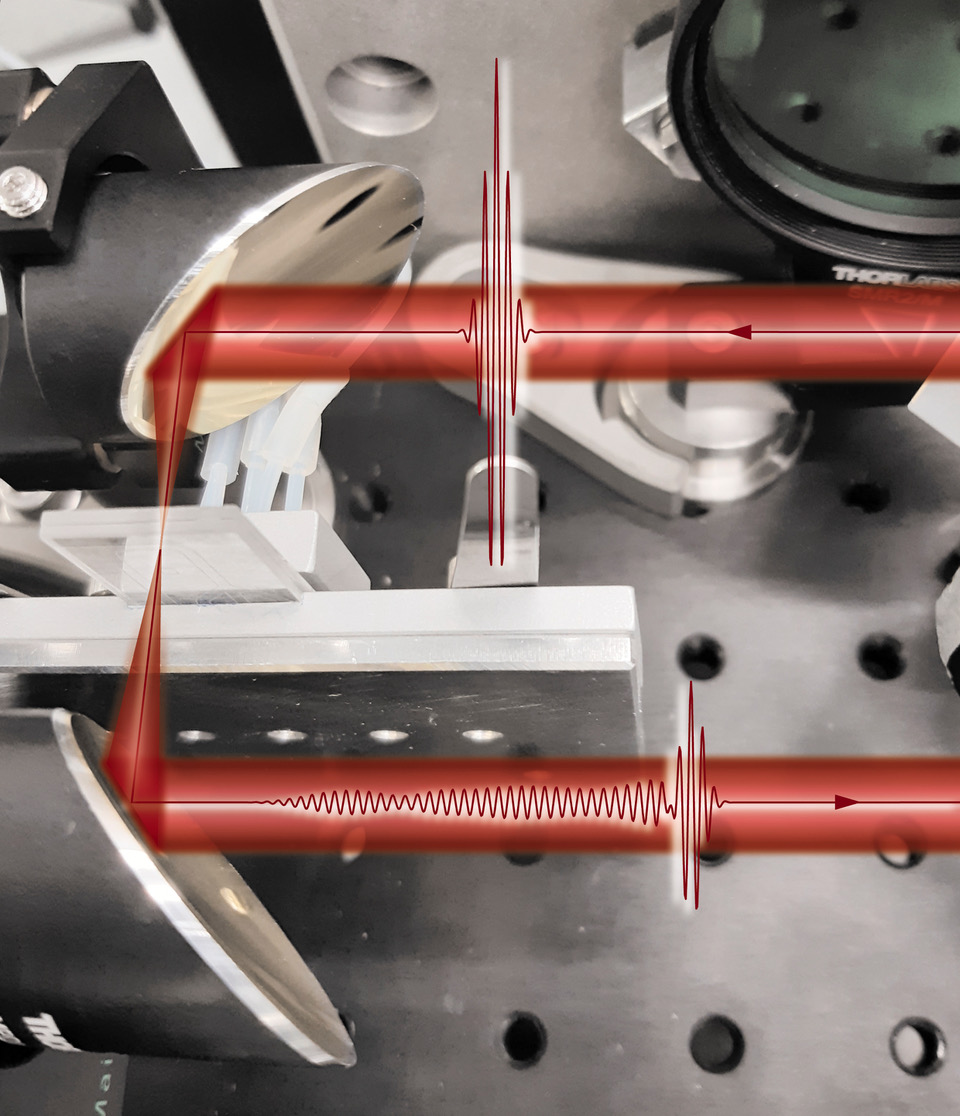
- High-throughput single-cell diagnostics for the identification of tumor cells circulating in body fluids of cancer patients as well as for phenotyping of immune cells, e. g., in patients with critical infectious diseases
- Infrared imaging of thin sections, in particular aiming at rapid, label-free intraoperative ex-vivo optical tumour boundary detection
- High-resolution, gas spectroscopy, e. g., for monitoring the infrared fingerprint of the exhalome of intubated patients, or for the spectroscopic analysis of the headspace of live cell cultures

